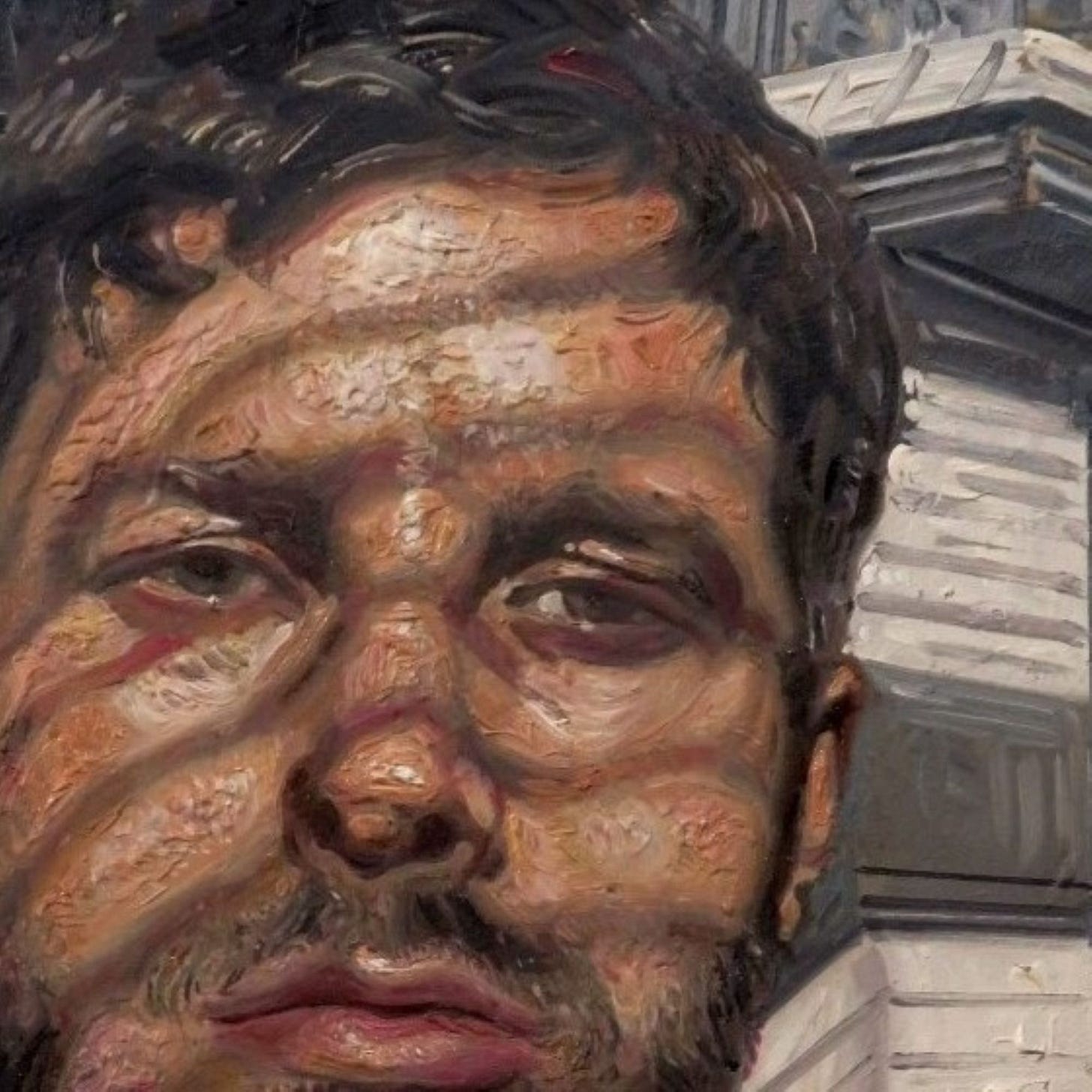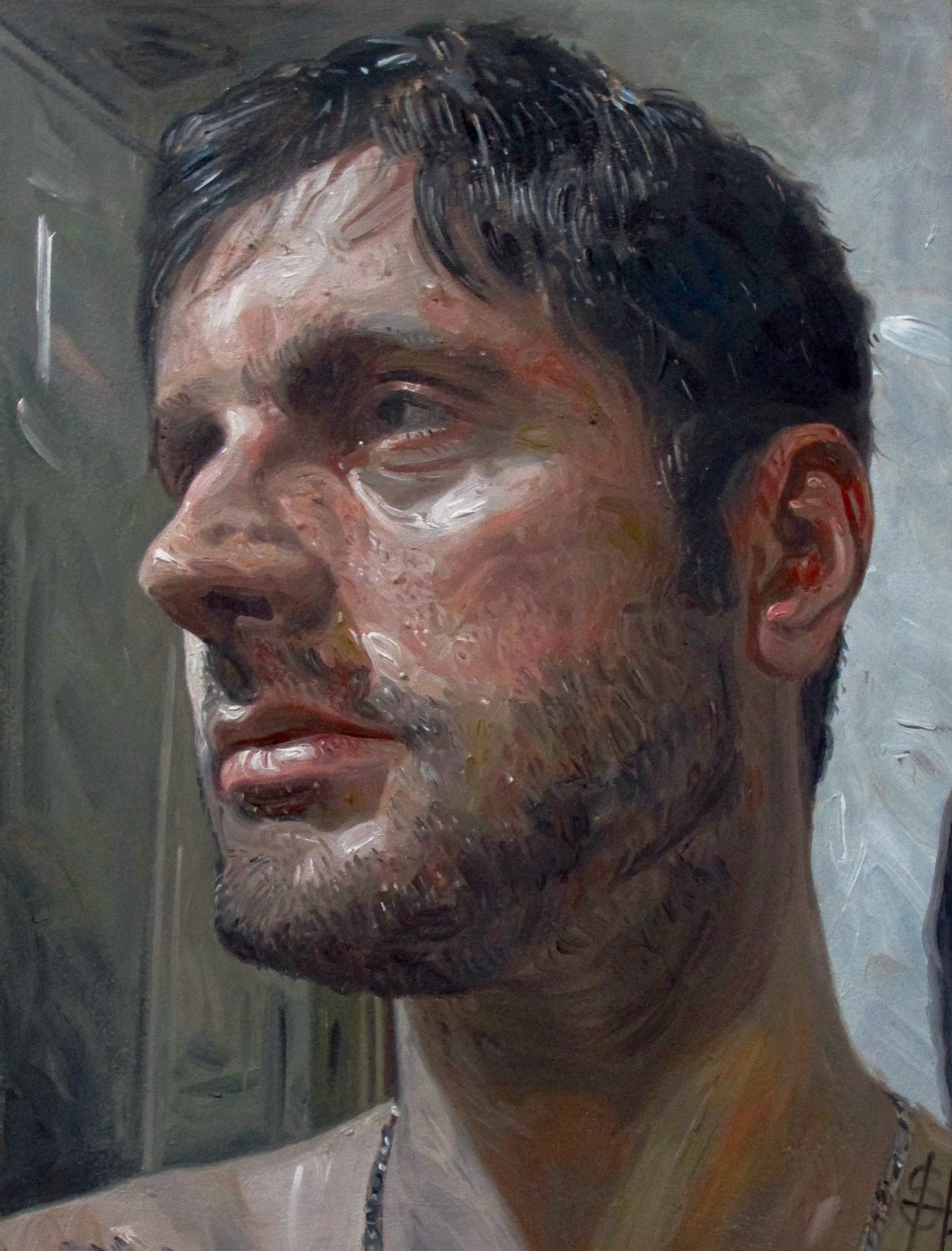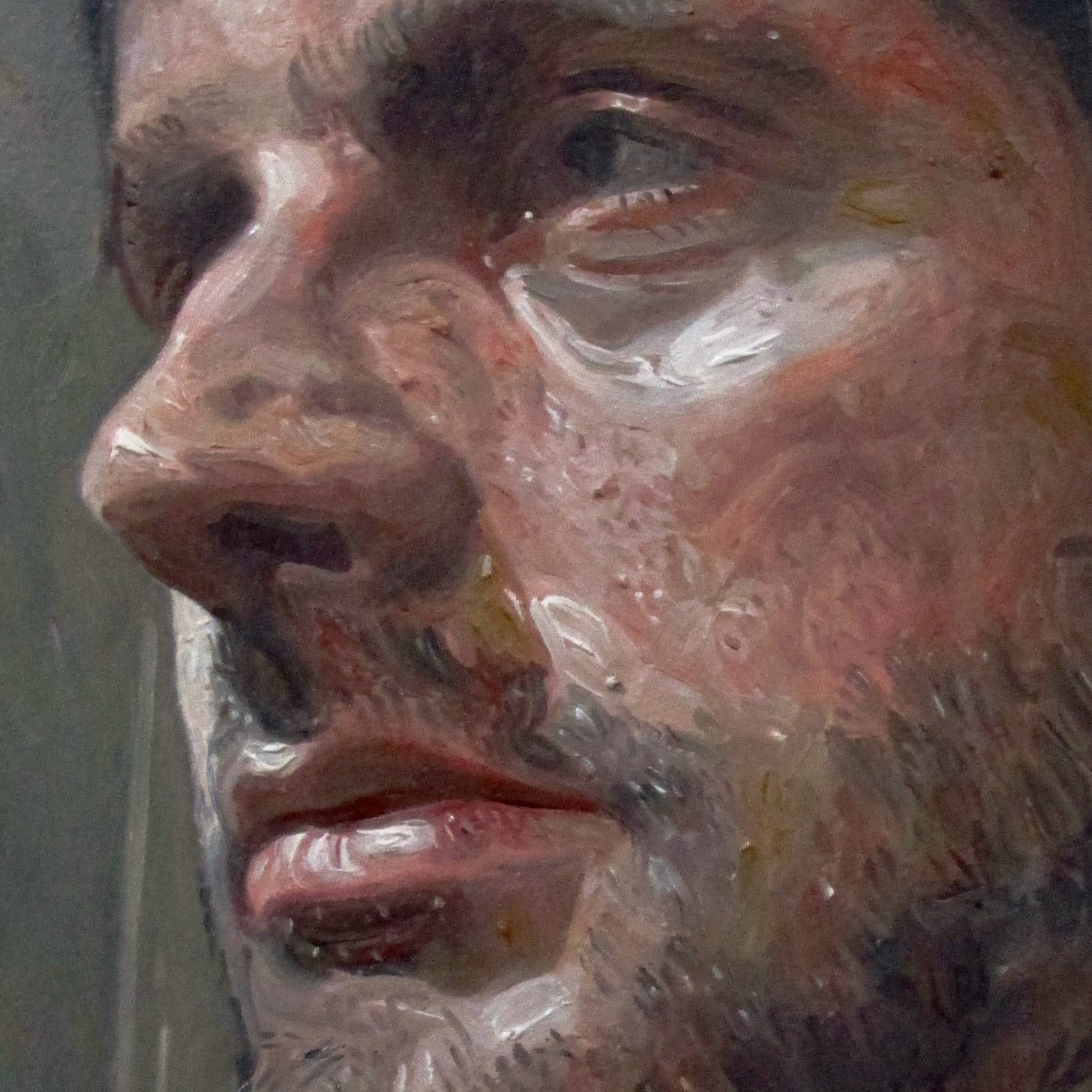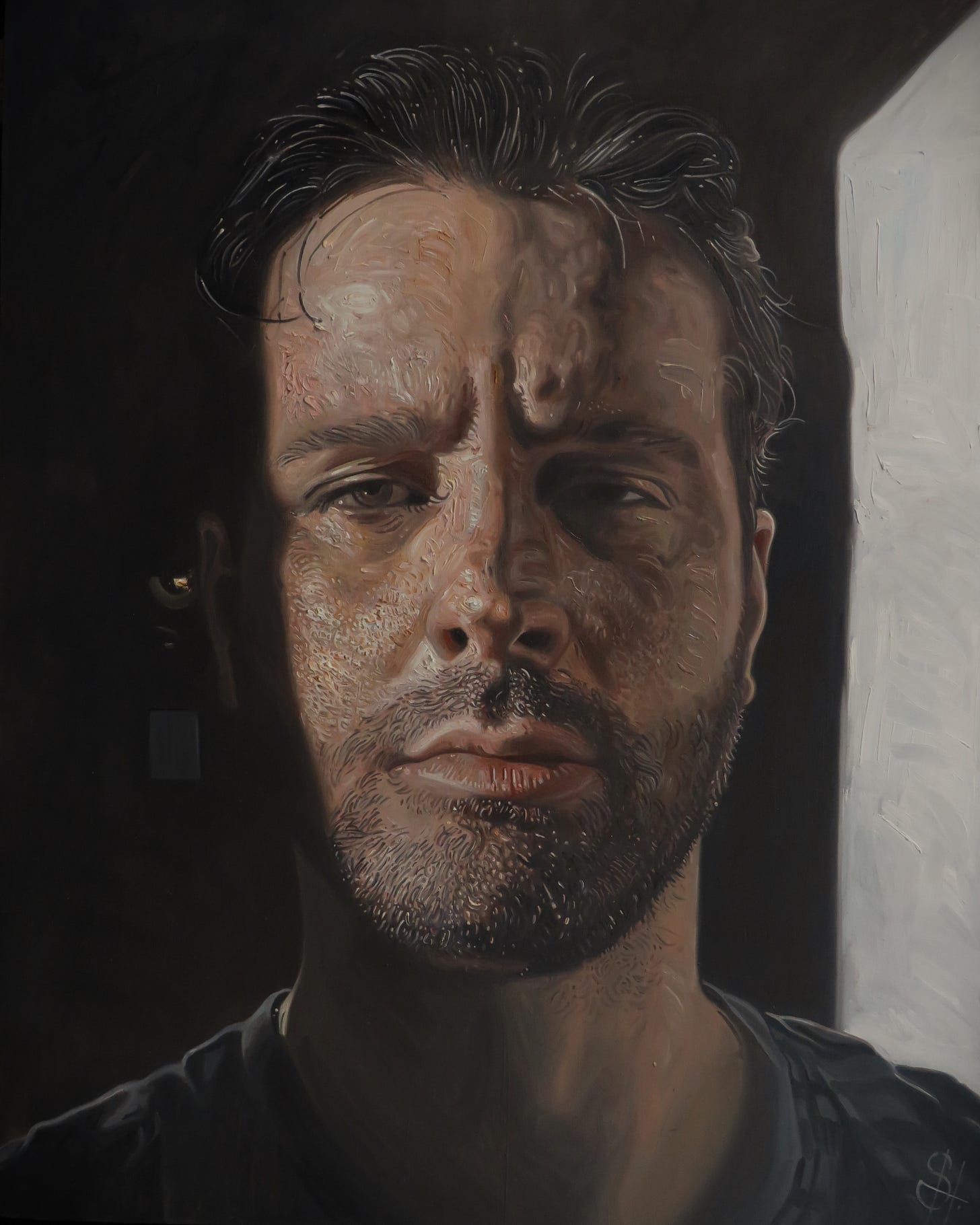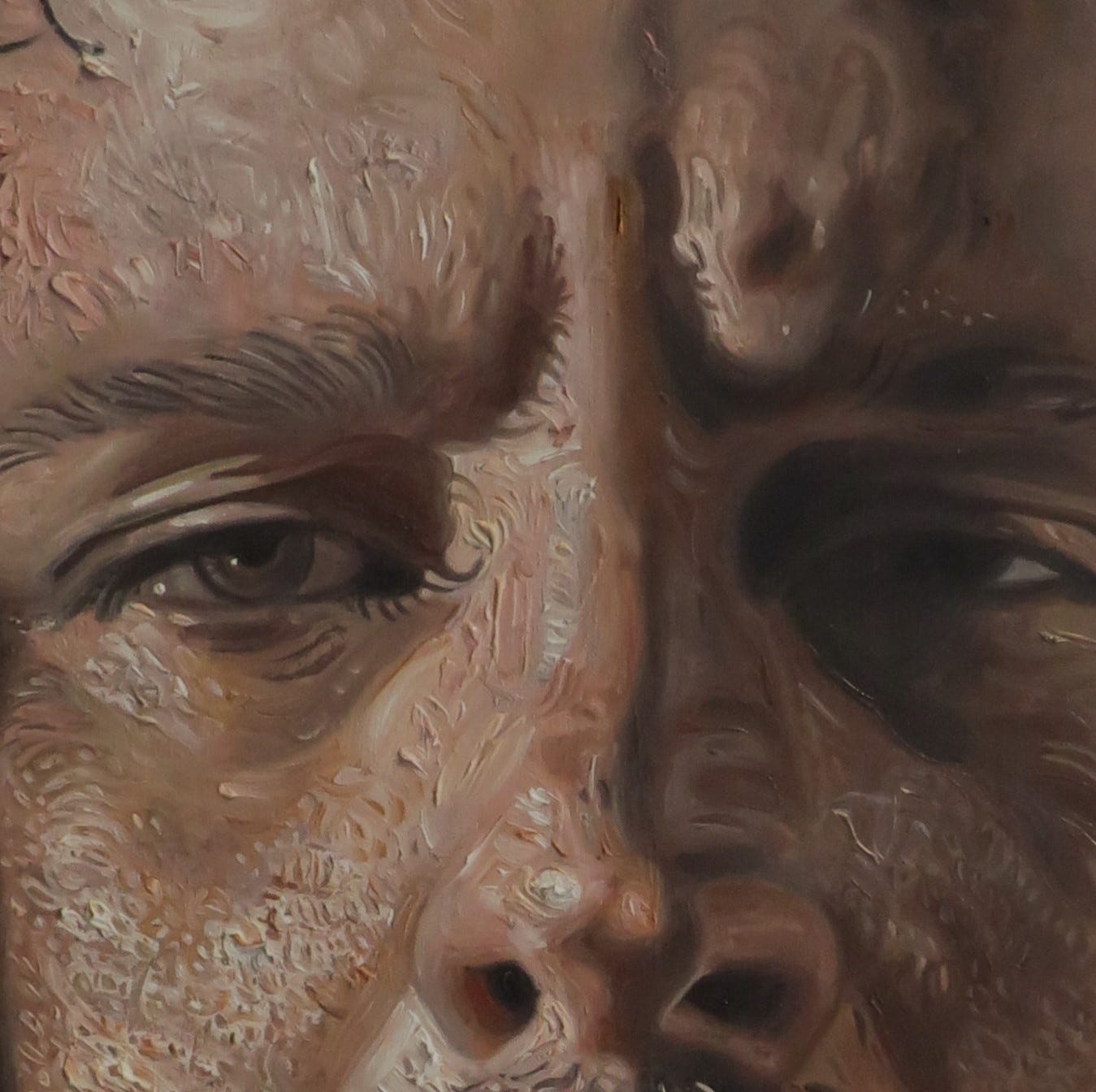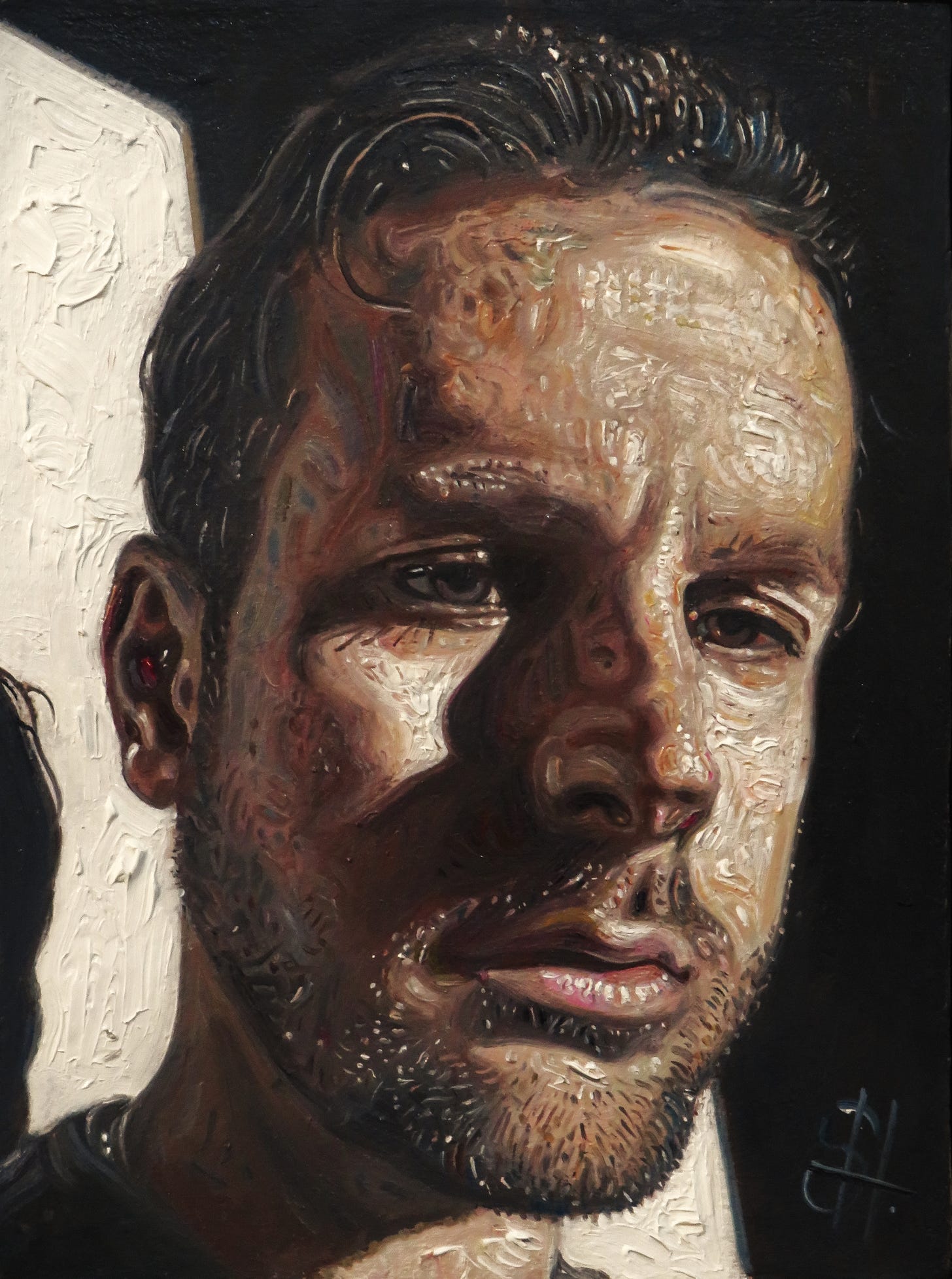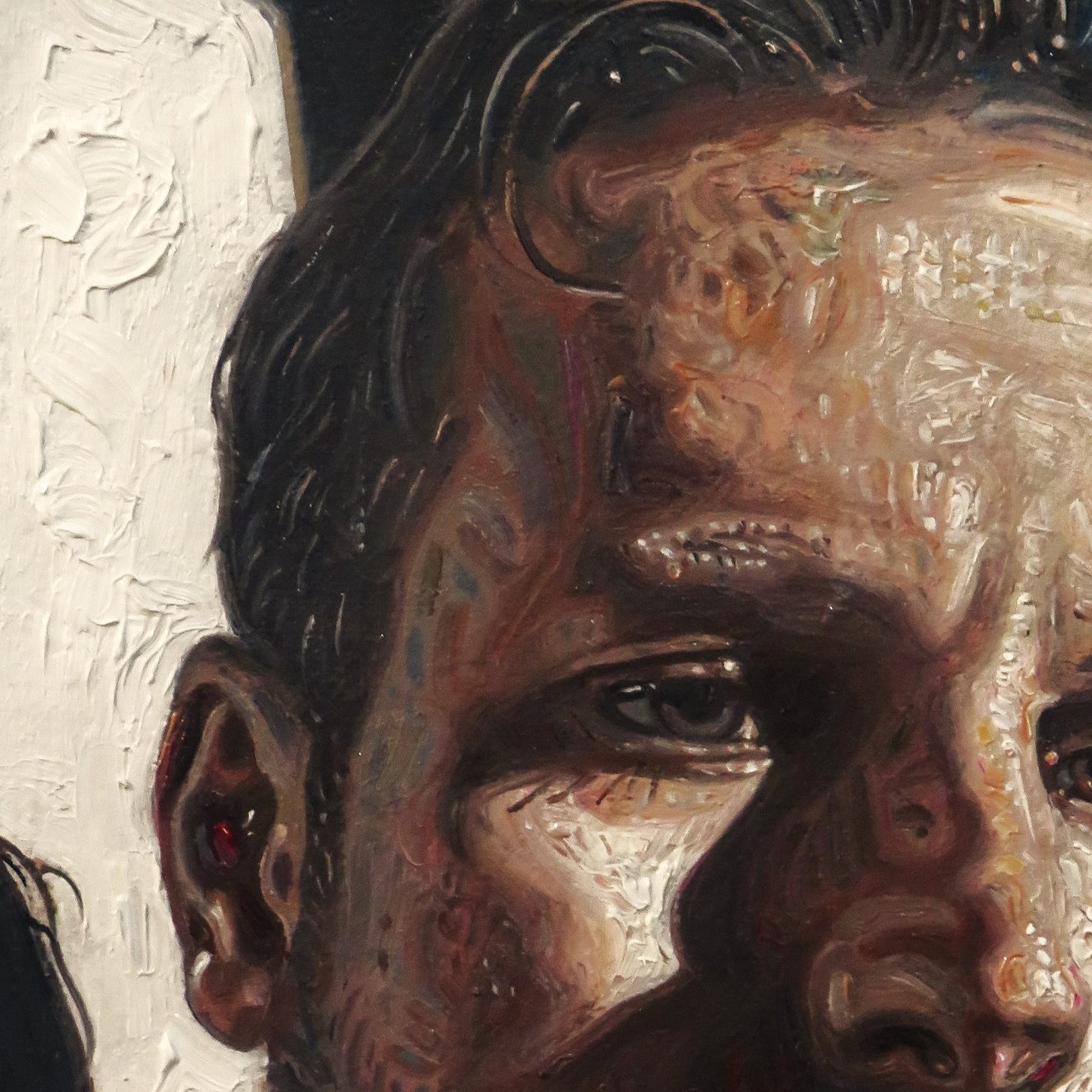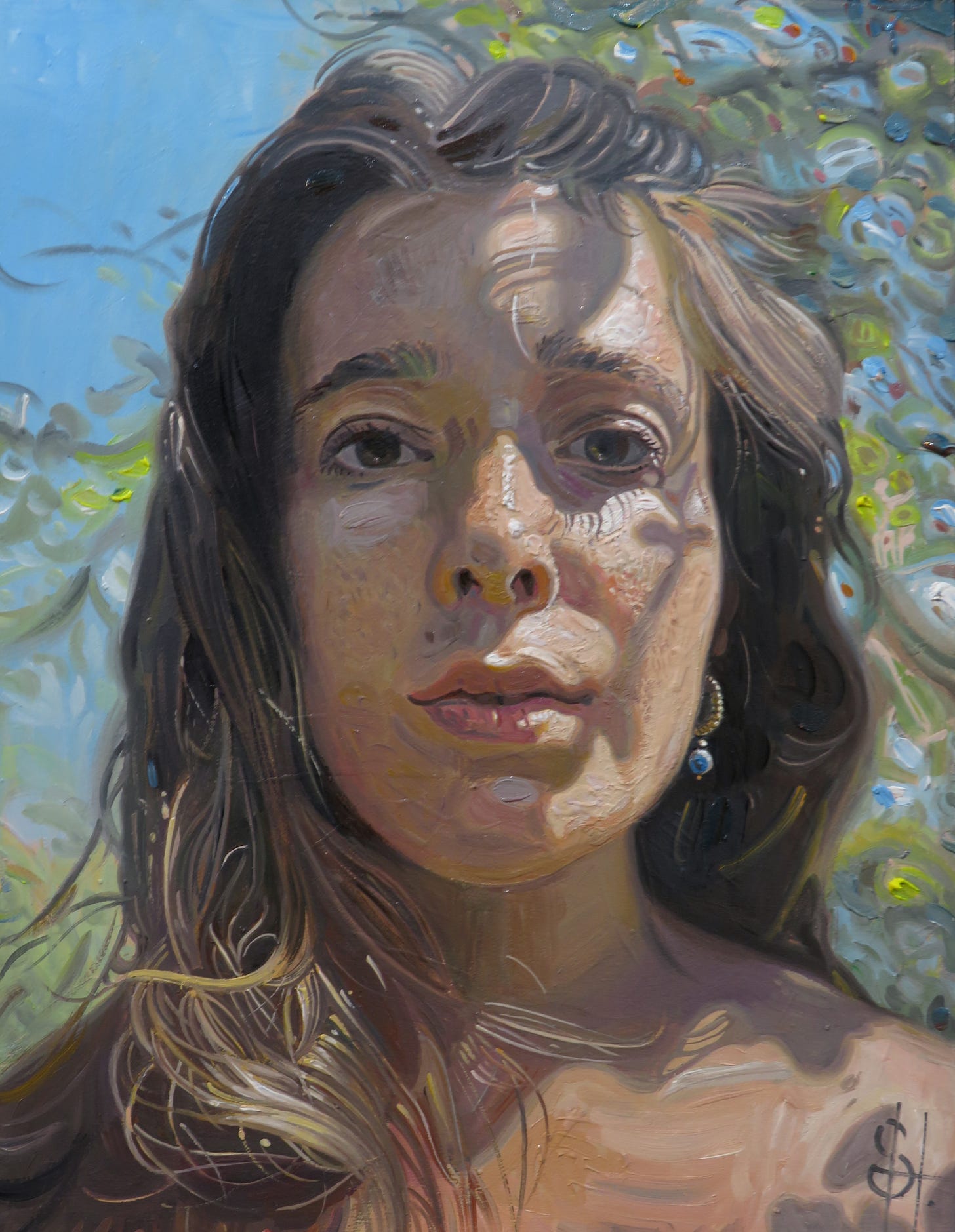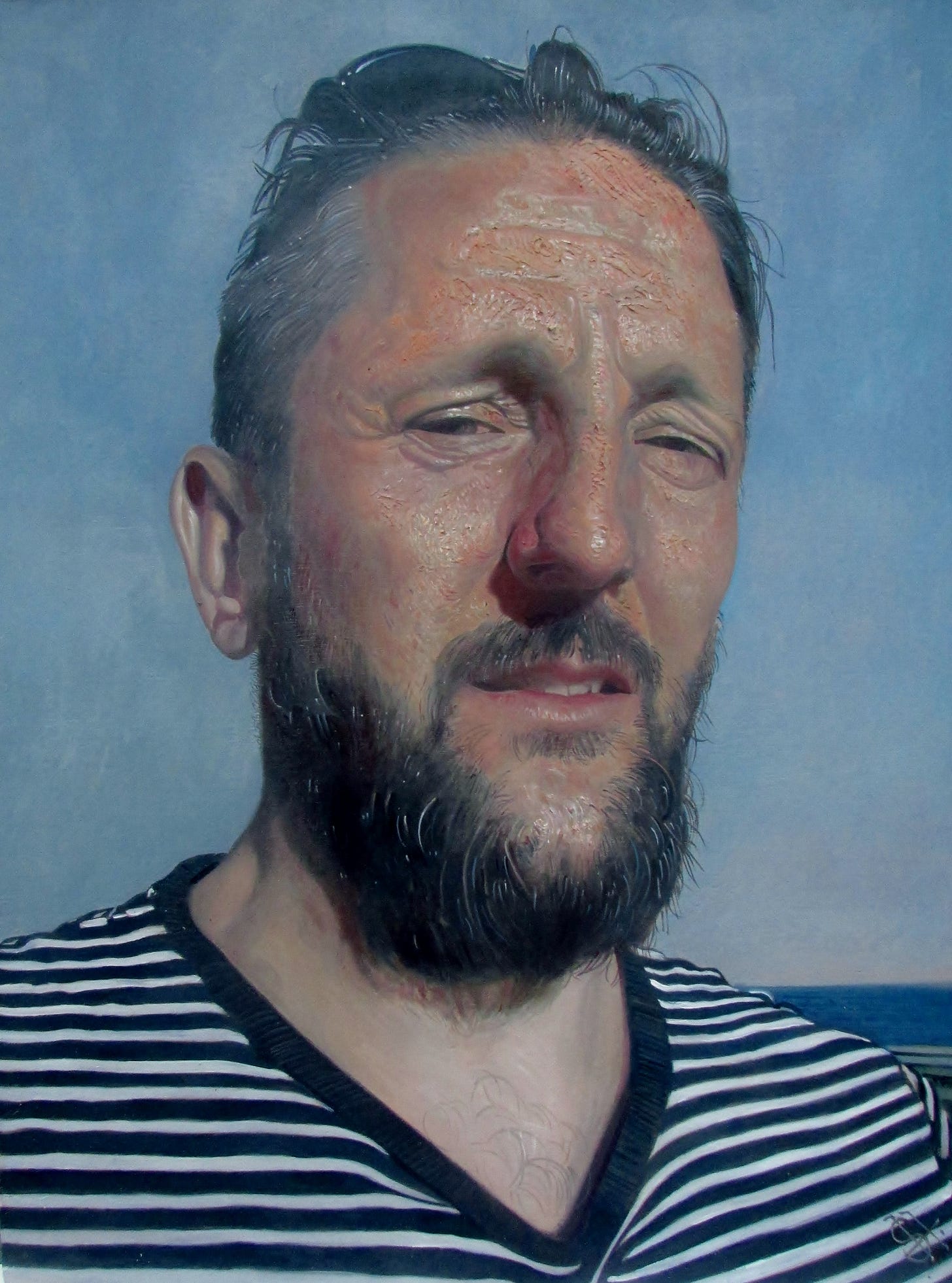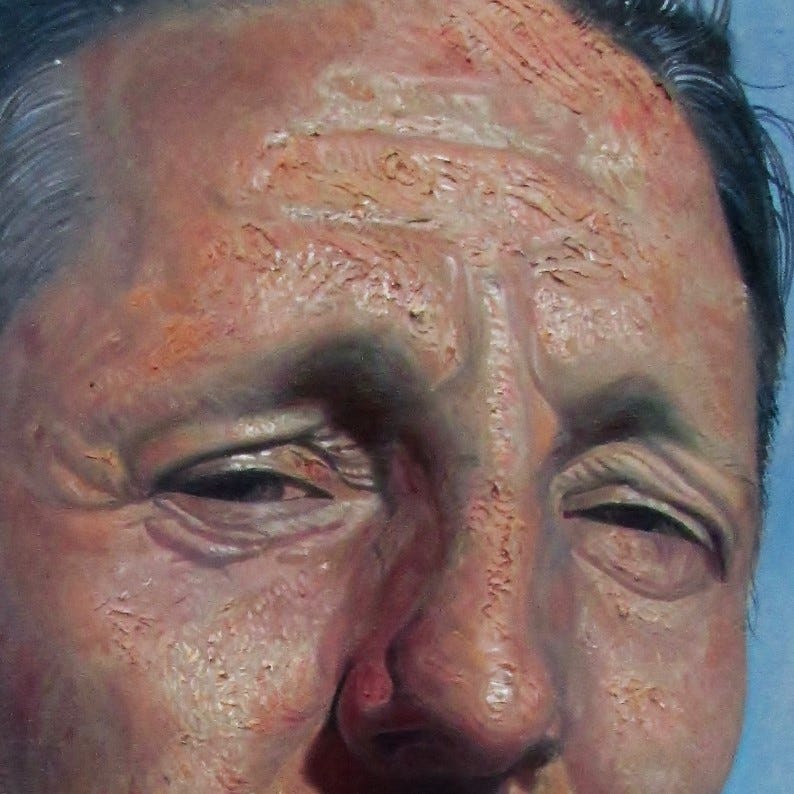I recently shared one of my portraits, 'My Brother Ronnie', on social media. It was part of the BP Portrait Award show in 2020.
It’s a painting in which I cast off my sometimes photorealistic tendencies, so I accompanied the painting with the caption: I think this is a nice balance between realism and expression, with loose brushstrokes and character ....what do you think?
The feedback was overwhelmingly positive, with people agreeing that they really liked the juxtaposition.
Reflecting on this, I’ve been questioning what truly make a good portrait…the vision that came to mind was an insect caught in amber — a fleeting moment of an artist’s expression caught forever in beautiful layers of paint, oil and varnish. And when viewed years later, it should look like it could burst back into life at any moment. I think this can only be achieved with the energy of the artist’s direct brushwork.
When in my studio and working on my own projects, I'm always consciously trying to find this perfect balance.
I aim for my paintings to be textured and fluid with plenty of direct brushstrokes — when my paintings are seen close-up in situ, I think this is more apparent rather than when they are seen on the screen of a monitor or phone.
I thought it may be interesting to share a few ways in which I open myself up to finding that expression in my work and show some close-up images.
Texture and form
In this painting 'Self Portrait, Summer Light', I decided to use a palette knife in the initial underpainting stages. In the priming stage I mixed some thicker gesso and glue, then applied it as if sculpting the form. In the the painting stage I applied thick paint with a knife. I only then decided to use brushes — almost like working backwards. I had to work within the contours of the impasto marks that I initially made and therefore could not be too fiddly. I had to be bold with my brushstrokes. I think the outcome was positive and this piece ended up being full if life.
One day painting — 'Alla Prima'
'Another way to keep my paintings process interesting is to start and finish the piece in one day, 'alla prima'. This works well for me as I paint from photos and therefore don't have light that changes with the day. I often prep my board/canvas the day before with drawing and quick tonal acrylic underpainting. But the moment the oil paint comes out, I limit that process to one day. The wet-on-wet approach gives a nice fluid feel and really teaches me to handle the paint with full confidence. Here is a good example above, 'Self Study’.
Interesting Light and shadow patterns.
I love working with interesting plains of light and shadow within my portrait compositions. This can be achieved by using sunlight through window blinds, railings and trees cast across the face. Not only can this element bring an extra narrative layer but can allow me to really shovel the paint on in the highlights. I noticed painters like Rembrandt and Van Dyke really go to town with the paint application on the main highlights so it’s always good to take influence from other work that inspires.
Keep it small
I find working on smaller paintings allows me to be more experimental — firstly because they are not as precious to me as they can be done in short periods of time and don’t cost a lot to produce. But also they can be worked on in one-day fluid flow states. I know this sound contradictory as most artists find working on larger pieces more liberating, but I find larger pieces very time consuming as I have to work in planned stages, work on sections at a time and I also find them physically demanding. With smaller work I feel liberated as I can use lots of paint and it can be finished in one fluid sitting.
Exaggerate the non-human elements
.
When working in portraits it’s important to get the likeness and proportions spot on. This can sometimes lead to overworking. But I like to keep the background, clothes and hair quite loose and expressive. The viewer’s eyes do not focus on these elements and their gaze tends to flow through them. I often take a break from the face when the portrait is getting this stagnant way and work loosely on the other non-human elements so I start to find the pattern and rhythm again, which in turn can be channelled back into the face or figure. This can also be a good way to experiment with the flow of the brushworks and a way of adding your own fingerprint away from the photographic reference. In this painting, ‘Nina’, I exaggerated the background, taking elements from the source and then working directly from my imagination. I also exaggerated the colours. You learn in time that these seemingly unimportant factors really influence the character of the portrait.
Exaggerated character
Someone who knows my brother well said this portrait, ‘My Brother Michael’, is more like him than the man himself — this is to me is the ultimate compliment. The painting should almost be a composite of the person. Sometimes when working on commissions from photos, it’s tricky to find that character. That’s why I would suggest asking for extra photos or even a video and doing some rough sketches from them and focus intently on their character. Luckily I have three brothers and they act as good reference as we are really close and I know them inside out. It’s important to slightly exaggerate their character and features of the subject, but not in a cartoon like way but a subtle way that jives with the feel of the painting.
Private sale of work
Some of the paintings above are still available, so if you’ve made it this far I thought I’d offer them at special reduced rate:
‘My Brother Ronnie’ - £1080
‘Self Portrait, Summer Light’ - £600
‘Self Study’ - £600
To secure these prices, you can email at higgsteve@yahoo.com for further details.
Thanks for reading.



